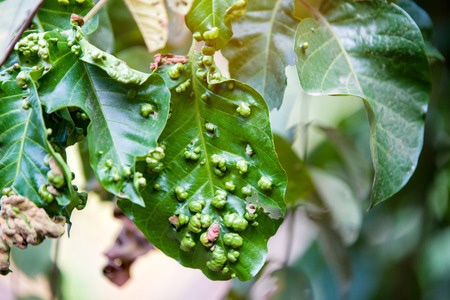Source: backyardboss.net
Published: May 31, 2017
If you’ve got a backyard, you might have started your own compost heap. Composting is a great way to get rid of leftover food, plant material and other biodegradable items that would otherwise have to been taken away to a landfill site or disposed of by refuse collectors.
It also means you have a ready supply of excellent compost and soil to help dig in around your potted plants or flowerbeds. Given the right ingredients, your compost can become rich in nutrients and allow your flowers or crops to flourish.
But do you know what things you can compost and what you can’t? Sure, most people know you can put vegetables and peelings like that on a compost heap, but is that all? To help you start your compost heap and make sure you get the right balance, we’ve put together a list of things you can compost – and some you can’t!
Keep this in your bookmarks and refer back to it anytime your hand is hovering over the bin and you’re not sure if you can compost those moldy things!
Click here to watch “The Perfect Compost Recipe – How to Get Your Compost Heap Cooking!”: https://youtu.be/M1kIpCBD3UI
1. VEGETABLES

This is the most simple answer and most people will know you can compost vegetables but it is as good a place as any to start the list. Vegetables can be fresh (although you should be eating them!), cooked, frozen and completely moldy. All of them are okay to be thrown onto your compost heap.
An average home throws away around 474 pounds of food every year so putting it to good use and making it into compost is definitely better than sending it to landfill. Just imagine the amount of compostable scraps from someone who is a vegetarian! Think about getting a little storage bin for your kitchen so you can transport scraps easier and in one go, very few people put their compost heaps just outside the kitchen door!
2. COFFEE BAGS (MADE FROM BURLAP SACKS)

The great thing about buying coffee beans, aside from their glorious smell when you roast them at home yourself, is they are still transported and sold in burlap sacks. Burlap is a loosely woven fabric made of natural fibres which makes it totally compostable. It may take a little while to break down on your compost heap but it will eventually and you will have saved it from the trash can. You can also use these sacks as a base layer for mulching or even to cover your compost heap over and increase the rate of rotting. If you want a bigger bag, try approaching the major coffee chains and ask if you can get them for free – very often they will hand them over for nothing!
3. PAPER NAPKINS

Paper napkins are great at kid’s birthday parties or when you’re holding a barbeque, but it can seem very wasteful when your guests leave and there are piles of paper plates and napkins left everywhere. If you choose a recyclable, unbleached paper plate and napkin then it is totally compostable. It should be chlorine free paper so choose carefully when you go to the store but that extra minute or so making sure your napkins can be broken down can help you reduce the amount of waste your next party causes.
4. POST-IT NOTES

You might be shocked by this one but you can actually compost post-it notes. Yes really. The little neon squares you find stuck all over your desk at work (usually with catty notes on them) are perfectly fine to be mulched down with all your other waste. The glue used in a post-it note is non-toxic and will break down over time so it is just like adding an ordinary piece of paper to your heap! So the next time the boss leaves you a snarky note or your work to do lists are stuck all over the place, have a clean up and throw the lot on the compost heap!
5. HAY

Unless you live on a farm, you might think you won’t come across hay that often – but you will. Do you use hay for animal bedding? Then it can go straight on the compost heap. Hay is just dried up grass. Hay is mainly used to feed horses or cows because it is harvested before the seeds are dropped which means it is full of more nutrients and goodies. But as grass clippings are also totally safe for your compost heap, hay is too. Just make sure you get the balance right of different organic materials.
6. OLD SPICES

I think every home has that cupboard. You know the one I mean, full of old cans and tins that never get looked at. Lurking in this cupboard you’ve probably got a few jars of dried up and stuck together spices. You may have bought them once upon a time planning to bake a cake and then used a teaspoon or two before they were relegated to the dusty cupboard. Well, they can be thrown onto your compost heap. As all spices are from natural sources like plants and nuts, they will biodegrade and break down over time. So clear out that cupboard!
7. PET HAIR

Dog, cat or any other small furry comes with its own problems when it comes to hair. You can often find balls of it scuttling about the house when your pet moults or even after they get back from the grooming parlour. But if you are tempted just to sweep it up and bin it – don’t. This hair can be composted.
Pet hair is actually a great source of nitrogen which your compost heap needs. It is classed as a “green” compost material so it is ranked alongside leaves and kitchen waste. If you really want to get some pet hair for your heap but you don’t have any small furries of your own, you can always ask a local dog groomer!
8. PINE NEEDLES

Pine needles fall into the same category as grass clippings as they are organic matter that is suitable for composting. They do break down more slowly than other organic matter however, so that is worth bearing in mind when you are looking at them for compost. Pine needles are at a pH level of around 3.2 which is what puts off many gardeners from adding them to their pile.
But after composting, pine needles are pretty much pH neutral so perfectly safe for your garden. The added bonus is pine needles don’t compact which means you can keep air circulating through your compost heap which is better for the soil in the long run.
9. POPCORN (POPPED OR UNPOPPED)

There can be a bit of waste leftover when you pop a bag of popcorn, some kernels may not pop at all and some can just get a little bit too burnt to be tasty! But instead of sending them to landfill, you can use your unpopped or popped popcorn in your compost heap – even if it is covered in salt or butter. Just bear in mind the added sugar or butter might attract ants or other pests!
10. POTASH ROCK

It sounds strange to add something like rock to your compost pile but it is one of the oldest ways people have been adding that little something extra to their garden soil. Potash is a natural fertilizer which is constantly used and recycled in the soil. The name “potash” comes from the old name for potassium and the process used to harvest it. Wood ash is put aside and soaked in old pots until the potassium was separated from the mash – so it was called “pot-ash”. The potassium is really useful for plants and is a brilliant addition to your backyard.
11. DUST AND DIRT FROM BEHIND YOUR REFRIGERATOR
Most dust and dirt that builds up in your home is made up of organic matter that will break down naturally over time. The dust in homes is mainly dead skin, dirt from outside and the aforementioned pet hair. You may also find food crumbs or small particles of plant or fruit and vegetable matter. When you’re looking behind your fridge and see a pile of dirt and dust lingering behind there, then don’t despair! Just sweep it up and head outside to the compost heap.
So it is absolutely fine to empty your vacuum cleaner straight onto the compost heap.
12. WOOD CHIPPINGS

Wood is a great natural material and can add extra nutrients to your compost heap. Wood chippings are a great option for mulch, spreading around flowerbeds or the base of shrubs to lock in moisture and to add around a rockery or other decorative feature in the garden. But if you’ve got some chippings you no longer want to use, or you’ve had a tree in the garden cropped back or even cut down, then use this leftover wood to create chippings and then sprinkle them straight into your compost heap.
13. BEE DROPPINGS

If you’re an apiarist or just have a colony of bees living in your backyard, you may well notice their poop! The bee droppings cover everything while the bees are active for about six months of the year. It might seem annoying, but if you scoop this dung from your hives or pick it up from around flat surfaces like decking or fence posts, it is great to add to your compost heap. Obviously this only applies if you’re around a lot of bees but it contains lots of pollen and other great nutrients to add to your soil cultivation.
14. LEAVES

Leaves are great to compost but the best way to make sure they are adding to your compost heap is to break them down into smaller pieces. Getting the leaves into your heap will create a much darker, richer soil. Leaves should be scooped up from the floor as soon as they fall and then use a strimmer or even just your lawn mower to chop them into smaller pieces. The leaves will break down quicker this way.
Avoid diseased leaves as they will just infect your compost and make sure you get the right balance of compostables as leaves are classed as a “brown” organic matter. Add in a mixture of “brown” and “green” compostables to get the right consistency.
15. SPENT MATCHES

As above, wooden matches are fine to compost as wood is a natural material that will easily break down and mix in with the soil over time. Are you a little worried about the chemicals found in a match tip? You needn’t worry. While the phosphorous on the top of a match is a chemical, it is also found naturally and will be perfectly fine to add to your soil. The top of a match, once burnt, turns into carbon which again is an acceptable thing to add to your compost heap.
16. HOPS

Are you a keen homebrewer? Or just have some hops growing in the garden that you want to get rid of? You might not realise it but hops, whether used in the latest brew you’ve made or not, are perfectly ok to add to your compost heap. While hops themselves are actually antibacterial, they are ok to add in small amounts. Just make sure it is a sprinkle on top rather than armfuls!
17. CHICKEN MANURE

If you’ve ever kept chickens, you will have seen the dramatic improvement to your grass once a chicken has been living on it for a while. Chicken manure is absolutely excellent fertiliser. If you’ve got a back garden secure enough, allow your hens to roam around and you’ll see your grass getting lusher and greener by the day.
However, if you’re roosting them at night you will find yourself clearing out huge shovel loads of straw thick with chicken manure. Gross. Don’t waste this natural fertilizer, make sure you add it into your compost heap and give your new soil a boost of vitamins and nutrients.
18. VEGETABLES DAMAGED BY FREEZER BURN

We all know you can compost vegetables, but you might be hesitant to add moldy or frozen solid veg to your carefully maintained compost pile. Well, it is perfectly safe to add these veg to your compost heap – even while it is still frozen. All freezer burn is where you haven’t properly wrapped your vegetables and the water molecules have been allowed to leach into the vegetable itself. As it is just water, it is perfectly safe to throw onto the compost heap.
19. OLD, DRIED HERBS

You might have dried out some herbs a few autumns ago with every intention of whipping up some sage and onion stuffing or using the dried thyme to decorate and season a lamb roast. But that day never came and now you’re left with a cupboard full of decidedly horrible looking dried herbs. If you’re not going to eat them, don’t let them go to waste. A herb (no matter how dry and unappetising) can be added to your compost heap. Treat it the same as dried grass clippings and it will add in an extra layer of goodness. It might even make the heap smell better!
20. FREEZER BURNED FRUIT

If you’re going to chuck your veg away when it gets frosted over, why not fruit? Fruit, especially soft ones like blackberries and raspberries, does not survive for long in the freezer due to its high water content. When you pull it out and it resembles an ice block rather than a punnet of fresh strawberries, just take the whole thing down to the compost bin.
21. BIRD DROPPINGS FROM CAGED BIRDS

It’s not just chicken’s manure that can help the garden, caged birds also have a similar affect on your plants and flowers. Use newspaper on the floor of your bird’s cage and when you clear it out you can just roll up the newspaper and take it all straight to be turned into compost. The droppings contain nutrients and newspaper also breaks down fast. Even the bird seed your pet drops is ok! The droppings should be mixed in thoroughly and you should always wear gloves when you are handling the manure.
22. KITCHEN ROLL AND PAPER TOWELS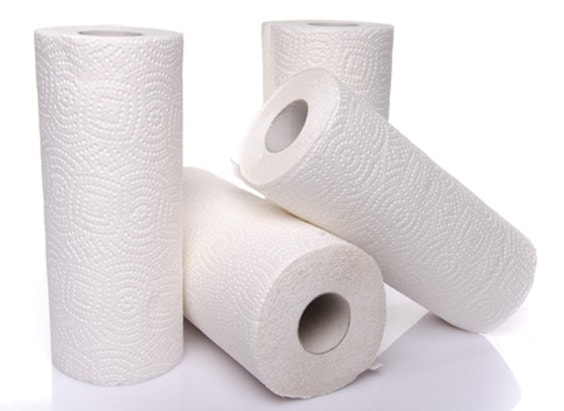
Just like paper napkins, kitchen roll and paper towels will also break down and make great compost. These are natural products that are derived from a plant so it stands to reason they will break down quicker. To help your compost stay healthy, use uncoloured and undyed paper towels which are pure paper rather than the plastic coated as these won’t break down. The best paper towels or kitchen roll to use is the kind that has already been recycled as it will be free from unnatural chemicals. You can even compost the cardboard inner tubes.
23. WASTE FROM HOME BREWING

Beer grains and hops are the leftovers from making your own beer and ales but they end up in landfill far too often. Instead of just throwing them in the bin, you can take them down to the back garden and add them to the heap. While these leftovers are safe to compost, they should be added to your compost sparingly. It should be around one part grains or hops to about three parts of carbon materials like dried leaves or newspapers.
24. GRASS CUTTINGS

This one should be a no brainer. Gardeners have been adding grass clippings to their compost heaps for centuries and it is the most abundant material in any garden usually. The thing to remember when you are composting grass cuttings though is to make sure you don’t add too much of them compared to the other materials you have in your mixture. Ideally you should let them dry out for a day or two and make sure you keep your compost heap really well aerated while they break down. They should be added in a 2 to 1 ratio with “brown” material like dried leaves. And if you have loads and loads of clippings in there you should use a fork or shovel to turn over your compost pile every week or so to make sure it is breaking down quickly and evenly.
25. HOOF AND HORN MEAL
This isn’t something the average gardener will come across but hoof and horn meal is excellent fertiliser. It is made by cooking and then grinding up the hooves and horns of cattle that have been slaughtered for meat. While it is great for your compost heap and garden, it is also a good way to make sure every part of the animal is used when it is killed and eaten. It improves soil structure and encourages roots to grow strong and healthy. As an organic and natural product you can rest assured it will add to your garden without needing harsh chemicals used in industrial fertilisers.
26. FISH DAMAGED BY SPENDING TOO LONG IN FREEZER

We’ve covered vegetables and fruit, but you can also compost fish that’s been left in the freezer too long. Much like soft fruit, fish can not survive for long in a freezer without losing its taste and getting covered in frost and freezer burn. Don’t just chuck this in the waste bin, food like this can be composted. The thing to bear in mind with food like this though is that while your compost does love the scraps, so will animals. So make sure you are using a compost bin or you have some sort of cover over your heap to deter the midnight raiders!
27. SEAWEED AND KELP
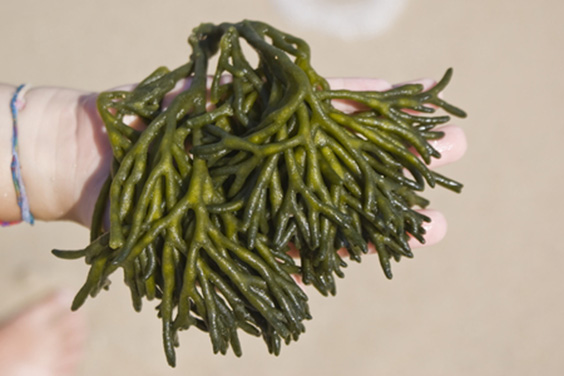
Do you live near a beach? Picking up seaweed and kelp might seem a bit gross but your garden will thank you for it. It is a great, free fertilizer and will add nutrients to your soil. It has no seeds from weeds or other contaminants and has a long list of benefits. It has minerals and hormones that stimulate plant growth and it is also high in carbohydrates which helps plants grow. It has no diseases that are transferable to plants on land which makes it ideal for using in the garden.
28. LEATHER DUST OR SCRAPS FROM LEATHER MAKING
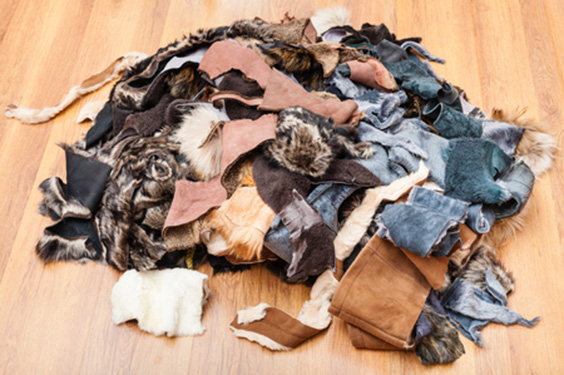
Leather is a natural product so it really shouldn’t be that surprising that you can compost it. If you are a leatherworker or make purses, handbags and wallets from leather you can find yourself with a lot of leftover scraps and bits from the manufacturing process. The leather will break down, although quite slowly, so it can be added in small quantities to the overall mixture.
29. MOLASSES

Sticky sweet molasses have a huge number of health benefits but as well as being good for humans, it is also excellent to use in the garden. The viscous product is created when sugar cane and sugar beet are turned into ordinary refined sugar that we would use in cooking or adding to coffee. The thick texture is how it is mostly recognised. As a natural product, it is fine to add to a compost heap but it is worth adding sparingly as the super sweet product will attract flies and other bugs.
30. BEET WASTE

Sugar beet is already turned into a variety of things to save it from just being dumped or sent to landfill. Huge sugar factories produce tonnes of this beet waste every day and it can be a problem to get rid of. Dried beet pulp can be made into food pellets for livestock and the other by-product is molasses as explained above. Again, it is a natural product so can be added to your compost easily.
31. AQUARIUM PLANTS

It’s not just grass or leaves from your garden that can be broken down in the garden, the plants from your aquarium can also be added to your compost heap. These plants are brilliant for your fish and mean the water they are swimming in is kept cleaner and has more oxygen. The plants do die off though and need to be replaced so instead of just throwing them away, get them out in the garden and add them straight to your compost pile. Just add the plants onto your heap just as you would with grass or other plant clippings.
32. POTATO PEELINGS

Don’t worry about those potato offcuts and peelings sprouting new plants in your compost pile, they are perfectly safe to turn into fresh soil for the garden. The potato peelings you compost though need to be checked first. The only reason against using peelings in your heap is potato blight. This is a fungus that can really damage your crops and as such you should check over any peelings you use in compost for blight before adding them.
33. UNPAID BILLS
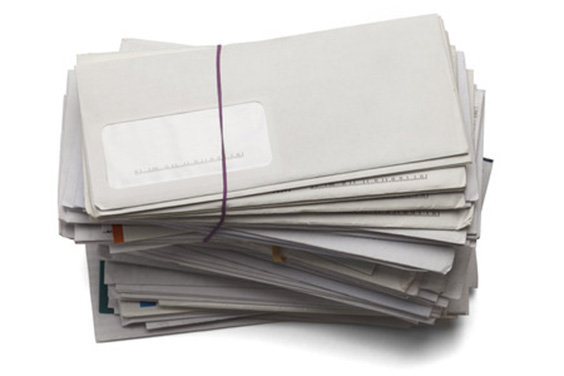
Any paper can be composted. As a natural product, paper will break down and turn back into a compostable material. Some may say it is slightly irresponsible to chuck bills onto the compost heap but the point is the same, the paper used for bills and any mail is completely compostable. Make sure the bill is printed on uncoated paper and is mainly white with only black print. The best paper to use would be some that has already been recycled.
34. RESIDUE AND WASTE FROM COTTON PLANTS
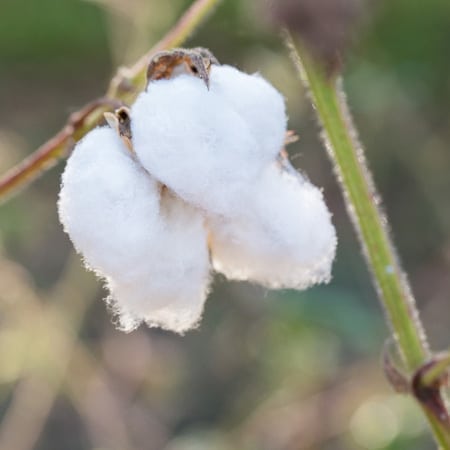
Using cotton plants and the waste from them as compost is so effective it has actually become a source of compost all on its own. A cotton plant grows and takes up nutrients that are then stored in the stalks, leaves and seed pods. When the cotton is picked, the pods (also known as boils or burrs) are left on the plant and then ploughed back into the soil when the farmers get ready for the new growing season. But sometimes these unused parts of the plants can be discarded. They haven’t been used for anything for years but recently it has been discovered that these make great compost.
35. WEEDS

While weeds are a nuisance in the garden and people cannot wait to get rid of them, the plants themselves don’t have to become completely useless when they are pulled from the ground. You might be concerned about adding weeds to your compost pile for fear of the seeds and offcuts infecting your flowerbeds when you sprinkle over the finished soil – thus starting the process again. But a properly maintained compost heap will actually kill off the weed seeds and leave you with just the rotting vegetation which will add nutrients and vitamins to the soil without spreading the seeds.
36. FISH MEAL

Fish meal is a great way to fertilise your garden plants and it is that which makes it perfect for compost. The slow release formula will strengthen shrubs, flowers, plants and grass as well as adding extra boost to your fruit or vegetables. Fish meal also improves good bacteria in your soil.
37. LIMESTONE

Adding limestone to compost is a really old method of improving the quality of any topsoil. The limestone, which is a soft sedimentary rock, means the finished compost will be close to pH7. You should only add limestone if the compost has a lot of acidic materials such as pine needles. Limestone is made up of material like coral and molluscs. It is used in building or even as decorative touches into gardens.
38. CORN ON THE COB

Just like vegetable peelings and leftover food scraps, corn on the cob can be composted. The cob, once you have taken off all the niblets, is often just tossed away without a second thought. But the cob itself, even though it seems impossibly difficult to break down, will be perfectly ok to add to the heap. The husks and the cob itself can be composted although the cob will take longer to break down than the husks. In fact, a whole corn cob can actually create an air pocket in the compost heap which will mean your soil will be better aerated overall.
39. BLOOD MEAL

Blood meal is left over from the slaughterhouse process and has a high nitrogen content which means it is great to add to your compost pile. This is often sold at garden centres and is a great option for fertilizer as it is very beneficial to fruits and vegetables. The blood meal should be used in the right amounts to make sure the soil in your compost heap is of the right consistency. People are often confused between blood meal or bone meal but blood meal has a high nitrogen content but the bone meal is full of phosphorous. This means blood meal will make the soil more acidic.
40. WINERY WASTES

As any winemaker knows, there are a lot of waste products from the winemaking process. Grape stalks, leaves and other wastes from the slush created when the grapes are squeezed down into wine are an unwanted by-product. But you can make your winery more eco-friendly by composting these wastes instead of using traditional methods to get rid of the excess. Adding the sludgey wine wastes (made up of seeds and skins) will give your compost heap a lot more moisture and help to speed up the breaking down process.
41. SPANISH MOSS

Did you know you can use Spanish moss in compost heaps? It is a great addition to your pile but it will add more acid to the soil so you should balance it with alkali produce (like limestone) so you get the right pH level in your soil. The moss will take a long time to break down, up to eight months, so this should be taken into account when it is added. The fibres are really useful to add texture to sandy or clay-based soils.
42. JELLY (GELATIN)
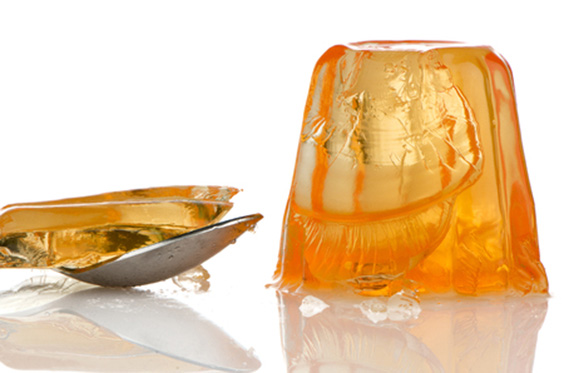
When you’ve made a bowl of jelly for a party and it just hasn’t been eaten, it can be tricky to get rid of. Do you try to water it down and pour it down the sink? Or do you throw it into the trash? You can actually add it straight to your compost heap. Unflavoured gelatin in packets that has expired can be added onto the heap. Gelatin is an excellent time-release fertilizer and for that reason you should be making sure you add some to your compost.
43. POWDERED OR GROUND UP ROCK (PHOSPHATES)

Rock powder can add some minerals and improve the texture of your soil. It is high in trace minerals that your soil needs. It is produced through a mechanical process or can also be crushed by natural sources like glaciers. They are a great addition to organic farms and contain potassium, phosphorous, calcium and other useful minerals like zinc and copper. Adding ground up rock or powder into your soil is excellent for fruit and vegetables. It actually improves the sweetness of fruit and vegetables.
44. GARDEN SOIL

This might seem counterintuitive but adding some good old garden soil to your compost pile can actually help get things started. Add a few shovels of soil from your garden into the compost heap and it will get things going. It can also help to balance out the pH level in your soil. For example, if the natural soil in the garden is very alkali and you have added a very acidic produce to your compost heap, then just a couple of shovels of an alkali soil can help to balance it out.
45. RABBIT DROPPINGS

If you’re the proud owner of a rabbit, or even a couple of rabbits, you will have to deal with their droppings at some point. When you let the rabbits have a run around in the garden, you might notice their droppings do act as a fertilizer on the lawn. When you’re clearing out their hutch you can add the dropping straight onto the compost heap. If you use newspaper to line the bottom of your pet’s hutch then the newspaper can just be folded up and put straight on the pile as well.
46. HAIR CLIPPINGS

This sounds a bit weird but did you realise that hair is actually compostable? Every day, millions of people have their hair cut all over the world and the cuttings are simply swept up and binned. The hair itself may not seem very compostable but, left for a long enough time, it will break down and add nutrients to your soil. You can actually add the hair straight into your soil, or sprinkle it on top of your pots, but this might be a bit off putting to any visitors to your garden. Just sweep it up then take the dustpan straight out into the garden and dump it straight into the composter. It is very high nitrogen so be aware of this when adding it to your soil.
47. STALE BREAD
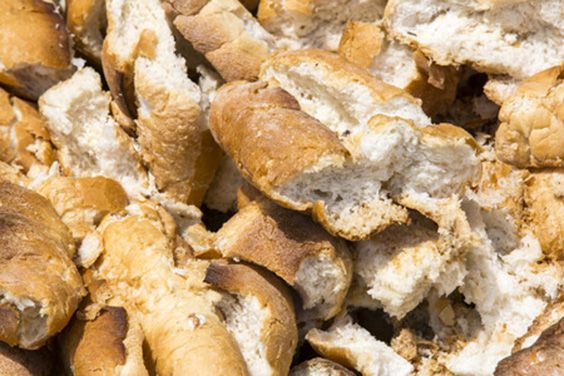
Stale bread is often just thrown out for the birds or taken down to the duck pond on a day out as a cheap way to feed the animals on a day out. But if your garden doesn’t have many wild visitors or you don’t live near a friendly duck pond, did you know you can compost it instead? The bread doesn’t have to be any particular type, white, granary and brown will all break down the same way eventually and the process happens rather quickly if it is kept moist. It is worth bearing in mind that bread is attractive to animals so if you are planning to add it to your compost heap it is best to do it and then mix it under some other material or soil to keep it hidden from any visitors.
48. COFFEE GROUNDS

Some people wrongly think that coffee grounds are far too acidic to add to your compost or garden soil. But they are wrong. While unbrewed coffee is acidic, the grounds themselves become near to pH neutral once they have been used for a cup of coffee. They are full of nitrogen which is excellent for plants and coffee grounds also add a lot of texture to soil which improves aeration and quality. Some gardeners swear by using coffee grounds to stop slugs and snails attacking your plants so by adding grounds to your soil it will automatically add some repellent into your garden without having to buy expensive, chemical-based repellents.
49. WOOD ASHES

Ash from your fireplace is often thrown out or even just left to pile up. It is actually one of the least used compost materials and it is perfect for the garden. You don’t even need a fireplace or a wood burner in your home, you might have used a smoker in the garden to cook on or even had a bonfire of some cut down trees or plants. It is naturally full of potassium and will make your acidic soil more alkaline. Wood ash should be added into compost piles in small amounts and then thoroughly mixed in.
50. SAWDUST
Sawdust is often used as bedding or linens for horse stables and other pet beds. The shavings are actually a great addition to your soil. As it is small chunks and fine texture, it will break down quickly. When it is properly composted, it looks like black, fine topsoil and as such it is an excellent addition to your garden. It has a high amount of carbon so when you add sawdust you need to add some nitrogen to your heap at the same time so you can keep the balance right.
51. TEA AND LOOSE TEA LEAVES
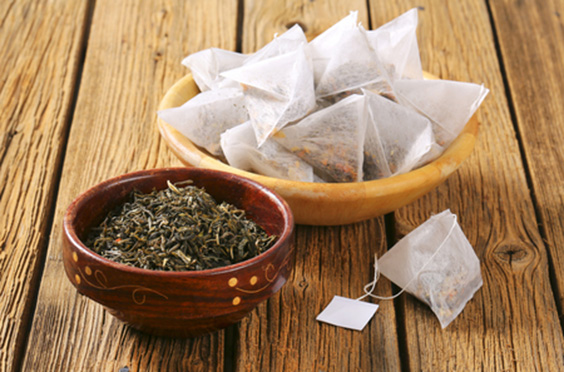
Tea and tea bags are one of the most thrown away items in any kitchen. In Britain, 165 million cups of tea are drunk every day. And believe it or not, North America is a close second. Tea is a great addition to your compost pile as it is a brilliant way to suppress diseases and increase the amount of nutrients available to the plant as well as providing an antioxidant facility for your plants. Using tea in your compost has even been credited with increasing the nutritional quality and flavour of vegetables.
52. SHREDDED NEWSPAPERS
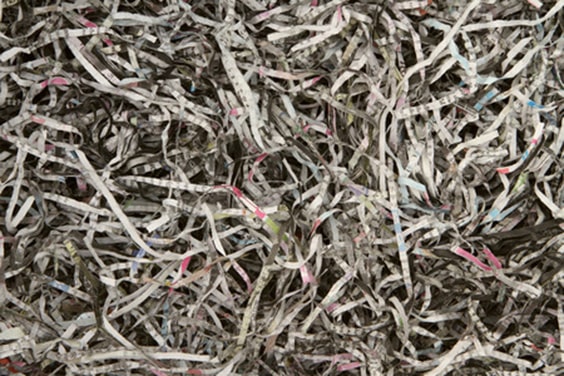
Newspapers are made of recycled materials and paper already. Statistics show nearly 90% of newspapers are just thrown away after they are read. Using shredded newspaper is a great addition to the compost heap in your garden. Shredding the paper will help it break down quicker in your pile. The paper can also be used for mulch and added straight to the soil or flowerbed. So if you have a shredder at home, run your Sunday newspapers through it and then instead of sending it off to the recycling plant just take it down to the garden and add it to your compost.
53. COFFEE FILTERS

It isn’t just coffee grounds that can be used for garden compost, the coffee filters themselves are also compostable. These thin, paper filters are used once or twice before being thrown away which can add up to a lot of waste products every year. They are taken out of the machine wet so that will actually help them break down faster and to keep them moist they should be added into the middle of the pile rather than left on the top where they will dry out.
54. EGG SHELLS
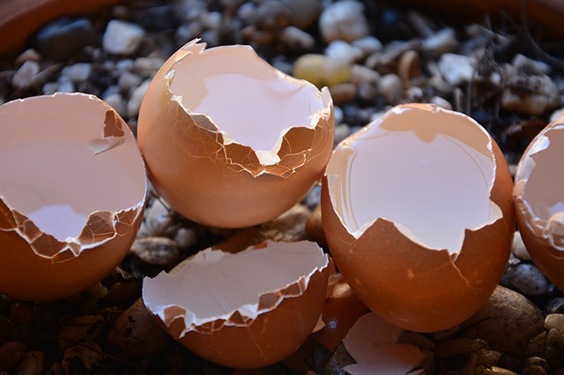
It seems unlikely, but eggshells are perfect to add to your compost heap. You should bear in mind that they take ages to break down but once they do they add in a lot of excellent nutrients. To help them break down faster, smash the shells up into smaller pieces and make sure they are mixed in well. It might also help to rinse out the egg residue from the shells before you compost them as this may attract pests and other animals.
55. COW DUNG

Unless you’re a farmer, or live near a livestock area, the chances of getting cow dung are pretty rare. But if you are lucky enough to be out in the countryside, cow dung is a great addition to your compost heap. Essentially, the droppings are just grass which makes it a great organic source of nutrients. While it is excellent fertiliser, it needs to be handled properly to make sure it doesn’t burn plants as it has a high ammonia level. The manure needs to be mixed with a compostable material that is high in carbon. The dung heats naturally and the added warmth will kill microbes and weed seeds.
56. ALFALFA

Adding alfalfa to your compost heap is like giving the whole pile a kick-start. The plant, which is mainly used in animal feed, acts as a stimulator. It decomposes quickly and creates heat which accelerates the rest of the compost materials to break down. The legume also has a high nutrient content which means your compost will also be high in these nutrients when it is completely broken down. Alfalfa also holds moisture really well which will help your compost mixture retain water when it is added to pots or raised flowerbeds particularly.
57. WINTER RYE

Winter rye is a fast-growing plant known as a “green manure” which carries on growing all through the year – even in winter. The rye will be incorporated back into the soil when it gets to spring. It can be used to cover areas in between plants and winter rye can be left to go to mulch when it frosts over or snows in the winter. The plants have another benefit that is protects the soil from rain which can leave it compacted. When added to compost it can improve the overall soil texture.
58. GRAPEFRUIT RINDS

If you are partial to eating grapefruit for breakfast every morning, the rinds can be difficult to get rid of. Grapefruit rinds are compostable and can be really beneficial to your compost heap. If you’re worried about them breaking down, you can shred them into smaller pieces so it works quicker. There is a common myth that citrus fruits are not easy to break down and will actually damage your soil. This isn’t true and although the citrus fruit is acidic, as mentioned before a little acidity is fine and can actually be a little beneficial if the soil is already alkali.
59. PEA VINES

Once you have harvested the peas from your plants, the pea vines are good to be composted. If you are planning to re sow the plants, then it is best to save some peas and seeds to restart the plants next year but the vines are fine to recycle. As with most vegetable plants (such as potatoes above) you should thoroughly check your plants for any signs of rot or disease before you put them into your compost. If the vines seem to have a white, powdery coating or blemishes then they shouldn’t be added.
60. OLD, COOKED OR UNCOOKED PASTA

This is something that divides opinion but pasta can be composted whether it is cooked or uncooked. This old pasta will break down although you need to be careful when adding it to your compost pile as with many food scraps it could attract wild animals and other pests. Uncooked pasta is obviously less attractive to the garden visitors than the cooked variety. If it has a sauce or cheese on top of it, the pasta can also be even more of a temptation than plain. Just make sure your pasta is thoroughly mixed into the pile so it is hidden from pests.
61. HOUSEPLANT TRIMMINGS

It doesn’t have to be just garden trimmings that can be added to the compost pile, if you get rid of house plants or have to trim back plants like bonsai trees or small shrubs you can add those off cuts to the compost heap. Any green material will break down over time so it is all perfectly fine to add.
62. SUNDAY NEWSPAPER SUPPLEMENTS
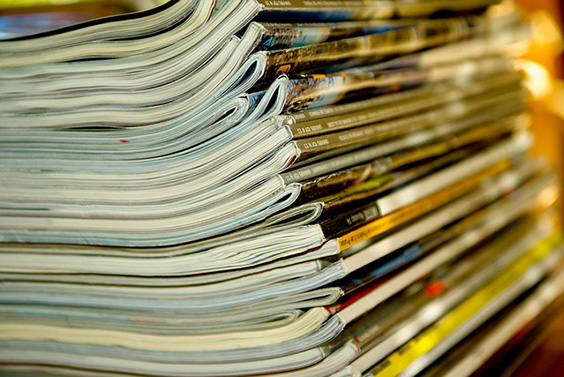
It’s not just newspapers that can be shredded and added to the compost heap, Sunday newspaper supplements are also compostable. Be careful to only take the pages out that are plain paper and uncoated, there are some that are glossy and covered in a plastic-type coating. Instead of throwing them away and putting them in the recycling, these papers can be shredded and added to your compost pile just like any other paper.
63. HARBOUR MUD OR SILT
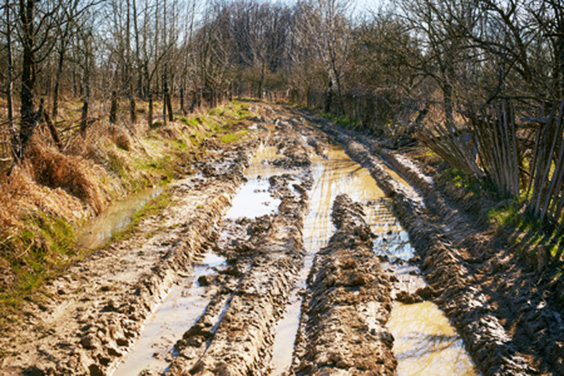
If you’re living near a river or harbour-side then you might come home from a walk covered in the mud or silt. But did you know it is a great source of nutrients for your compost heap? If you also have an old pond that you are draining, you can use the soil from the bottom to spread into your compost heap. This is obviously a wet material so it can add some much needed moisture to your soil.
64. PEANUT SHELLS
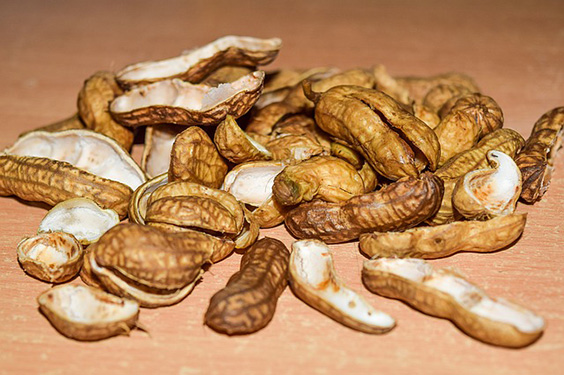
Peanuts are a tasty snack but getting rid of the shells is a problem for everyone. Lots of people just throw these in the bin but they can be broken down into compost. While they will take a while to break down, you can break them into smaller pieces and it will go much quicker. They can also be broken up and scattered onto soil as a mulch. Make sure you check them over for any signs of disease or blight before you add them though to protect your soil.
65. OLIVE PITS

Olives are an excellent snack or appetiser but the little pits inside are too often just thrown away. They really don’t break down too well, and can hang around for a long time, but if you think of them as adding small rocks or stones to the overall mix then it makes more sense. The olive pits can add some air pockets in the soil which helps the compost break down quicker overall and means the soil is more aerated.
66. GOAT MANURE

Some people like to keep goats as pets, these friendly little creatures can provide milk and also nibble your grass down to a manageable length. Just be careful that is all they can eat though as goats are known for having a voracious appetite! Did you know goat manure is a brilliant addition to your compost heap though? Some people say goat manure is the perfect compost for your garden. Luckily for goat herders, the pellets are naturally dry and easy to collect so it is definitely a less messy source of compost than cow dung.
67. FELT WASTE

There are lots of things you can do with leftover scraps of felt when you’ve finished crafting but it is also perfectly ok to compost. It can take as little as a week to break down but, depending on the size and the makeup of the felt, the felt will be gone within about five weeks at most. To make it disappear into your soil quicker, break it into as small pieces as possible.
68. WHEAT STRAW
People have been using straw for bedding for livestock since biblical times and it is also easily composted once it has been used. Straw is just the same as hay but it differs as the seed heads have been removed and the stalks remain. Even if the straw has been used for animal bedding and has manure mixed into it, all of it can be scooped up and added straight to the compost heap as it is.
69. PEAT MOSS

Lots of gardeners swear by using peat moss in the garden to boost plants and shrubs. You should always moisten it before adding it to soil or compost as it helps to make it work faster. Add peat moss in a ratio of two parts moss to one part soil and when the compost is added into the soil itself it should be worked into the top 12 inches and raked in carefully so it is evenly distributed.
70. TISSUES

Just like paper, tissues are easily recycled and composted. Instead of just throwing the tissues in the bin, and eventually taken to landfill, they can be added to your compost heap where they will break down safely. You may be concerned about spreading colds and viruses if you have had an illness but most cold and flu viruses don’t survive very long outside the body so it is generally fine to compost them. If you are very unwell and usually compost your tissues, it might be best to double check with your doctor if the particular illness can be spread this way beforehand.
71. WATERMELON RINDS

Watermelons are known for their thick, tough skins and juicy interiors. The strong skin might make it difficult to break down on a compost heap – but it is not impossible. Any good compost mix should be an equal mixture of green and brown materials along with some water for moisture. The brown matter is stuff like twigs, dried leaves and cardboard whereas the green material would be classed as food scraps and vegetable peelings. To help the green watermelon material break down quicker, cut it into small chunks around three inches square.
72. BAGASSE (LEFTOVER FROM SUGAR CANES)

Bagasse is a product that is leftover from sugar cane production and can cause lots of problems for large companies trying to get rid of it. The bagasse can actually break down in as little as three months if it is used in a commercial composting facility but it will take a little bit longer in a home compost bin.
73. ONION SKINS

The thin, papery onion skins that protect the flesh of this vegetable are useless – or so you might think. When the onion is growing, it provides a function but the skin itself is inedible so it is often just thrown away. Onion needs to be treated carefully, like all food scraps, as the strong smell may attract pests and other wild animals. This is why you should add them into a bin with a lid if you need to or bury them into the pile carefully. Due to their smell, you shouldn’t add onion skins to a compost pile where you are using vermicomposting (using worms).
74. LEATHER WALLETS

Leather is a natural product and, as such, can be broken down into a compost successfully. The leather may take a little while to break down and vegetable tanned leather actually takes longer than chrome tanned material. The longest time it took for leather to break down in a biodegrade study was five months while the same study found it could be done as quickly as two months if enzymes were added. As leather is treated, it is a natural microbial agent.
75. PIE CRUST

When you’re baking a pie, even if you buy ready-made pastry, sometimes the crust can burn and become too hard for even your hungriest guests to eat. Instead of just tossing it out for the birds to peck apart, you can throw your leftover pie crust straight onto the compost heap. Whether it is cooked or not, the crust will eventually break down. The crust will be tougher and take longer to compost when it is cooked but it will eventually get broken down. Just make sure it is in a bin with a lid to deter pests.
76. DAIRY MILK

This is not something you would usually add to a compost heap; more likely you would pour it down the drain. Milk does smell awful when it goes off and turns sour so it really isn’t something you want to add to your compost heap in great quantities. While pouring gallons of the white stuff isn’t a good idea, a few dregs from your milk bottle mixed into a large heap well will actually give your compost some more moisture and alkali additions.
77. SOYA MILK OR BEANS
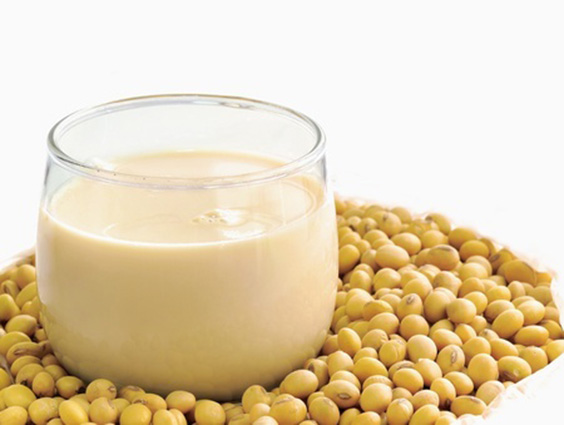
Soya milk doesn’t have the same problems as dairy milk when it goes off. It stays relatively odourless and will be a lot easier to add to your compost heap. Soya milk is derived from the soya bean so it is a truly natural product with little room for bacteria to form or grow. The soya beans themselves can also be added to the pile fresh as they will act like any other vegetable and break down easily.
78. TREE BARK

While many people who enjoy gardening know the power of tree bark for mulching, it can also be used to add nutrients and texture to your compost. The bark can be acidic so it needs to be added alongside alkali ingredients to make sure the mixture stays at the right pH level. The bark will break down quicker the smaller it is so it is worth smashing it into as small pieces as you possibly can before adding it.
79. STARFISH

This is a bit strange but starfish can actually be added to compost. We are not advocating taking these beautiful creatures from their natural habitat while still alive and tossing them onto the compost but if you find a dried up, dead starfish at the beach or in a rock pool then it is perfectly safe to add to your compost heap. It can even add some unusual nutrients to the soil.
80. LOBSTER SHELLS

If you love the luxurious dinner time meal of lobster bisque, you may find yourself with leftover lobster shells and claws once you have finished eating. It can be tricky to know what to do with them as you would think they would be too hard to break down into compost. However, they are very similar to eggshells in that they will break down but it will take a long time to disappear completely. They can add great texture to the soil but if you don’t have a covered compost heap then make sure you rinse them thoroughly and then bury them into the pile deeply so they’re not a target for animals.
81. MELTED ICE CREAM

Much like milk, melted ice cream is safe to add to your compost heap in small amounts. Bear in mind it will go sour, just like pure dairy, and it also has high amounts of sugar which can attract bugs and wasps to your pile.
82. FLOWER PETALS

It’s not just shrubs and weeds that can go onto your compost heap, flower petals are fine to add too. Maybe you’ve had a cut flower display or have some dried petals leftover from a craft project or wedding. Instead of just throwing them in the bin, add a little colour (and a sweet smell!) to your compost heap. Flower petals are very delicate so will break down easily. However, it is important to keep them moist or they will simply dry up so make sure they are mixed in and buried carefully.
83. PUMPKIN SEEDS

Around Halloween, everyone loves to empty out the inside of a pumpkin and carve up a Jack O Lantern. But while you may happily throw any pumpkin flesh on the compost heap, did you know you can compost the seeds as well? Gardeners may want to save some to create their next year’s pumpkin crop and some may even be concerned that pumpkin seeds could sprout on the compost itself! But in general the climate of a compost heap will not allow the seeds to grow so they will be broken down the same as everything else.
84. Q-TIPS OR COTTON BUDS (JUST THE COTTON ENDS IF THEY HAVE PLASTIC HANDLES)

Cotton buds are one of the most versatile products and will be found in every home. From cleaning nooks and crannies in your kitchen to dipping in nail polish remover and tidying round your manicure, they are a staple. But many people don’t realise they can be recycled and some even flush them away which leads to thousands of the tiny plastic sticks washing up on our beaches. Buy the kind with the cardboard handles and you can toss the whole thing on the compost heap where it will break down harmlessly.
85. FINGER AND TOENAIL CLIPPINGS

This is pretty gross, but we all have to cut our finger and toe nails. Many people just toss the clippings in the bin when they are finished without a second thought. But these clippings will break down on a compost heap – eventually. Finger and toenails are made of keratin and although they seem tough this natural material will compost.
86. OLD YOGURT

This is just like adding dairy milk to your compost heap so the same sort of rules apply – try not to wait until it has completely soured as it will just kick up a huge stink in your garden. Add small amounts to the pile and mix in thoroughly so it doesn’t attract pests. The best compost heaps for this kind of waste is one with a cover.
87. APPLE CORES

Apples are naturally biodegradable but people may be put off adding them to the compost heap because of the seeds involved. The skin, flesh and seeds will all break down although the seeds will take the longest due to their make-up. The seeds won’t have time to germinate as the conditions in the compost heap won’t be right for them so they will usually just break down without a problem.
88. TEA BAGS (HERBAL, GREEN, BLACK)

Teabags are piles of leaves contained within a mesh bag – but is that compostable? The answer is yes. Some of the bags are more easily composted than others, depending on the material they are made from. Teabags also tend to dry out quickly so when adding them to your compost heap so make sure they are moistened and buried into the heap itself.
89. OLD CUT FLOWER ARRANGEMENTS

Fresh cut flowers are a joy to receive as a gift but it is often difficult to think of what to do with them when they die. Flowers can dry up quite quickly when they are cut which makes them difficult to get rid of. The petals and stalks will break down fine and you don’t need to worry about plant food that is sometimes added to the floral arrangements as the amount that will stick onto the flowers themselves is so minute that it won’t impact your soil.
90. ELMER’S GLUE
Glue is probably the last thing you would think about composting but the crazy fact is, it is totally compostable. You might have some dried up glue left in the pot from crafting so as long as you take it out of the plastic container and make sure it has no other debris in it (craft paper is fine but plastic or metal is not) you can toss it straight on the compost heap.
91. BBQ’D FISH SKIN
Fish is one of the most perfect things to stick on the barbecue but once you’ve scraped all the flesh from that lovely crispy skin, you might struggle to know what to do with it. Scales might seem like a really difficult thing to break down as they are so hard but they will eventually break down and add more nutrients to your compost.
92. BALLOONS

This is a weird addition to your compost heap but latex rubber is completely biodegradable. People often forget when they are looking at the brightly coloured balloons at a birthday party or celebration that they are actually made of a natural product. But one thing to bear in mind is how long a balloon will take to break down, some people estimate it takes around four years and in that time an animal could have picked it up. So make sure if you are going to add it to a heap that the heap is sealed and pest proof.
93. STALE CHIPS

Chips are just like potato skins in that they are tasty, full of vitamins and biodegradable. A bag of stale chips can be smashed up and added to your compost heap but you should be wary of them as they are often deep fried in oil and can make your compost greasy. For this reason, it is best to compost oven baked or low fat chips rather than the deep-fried kind.
94. BAT DROPPINGS

Anyone with unwanted guests in their attic knows the number of droppings a collection of bats can leave behind. This waste, also known as guano, is actually brilliant for the garden. It comes in a huge variety of types depending on the species of bat but, like pretty much all animal waste, it can add some excellent nutrients to your compost heap.
95. RAPESEED MEAL
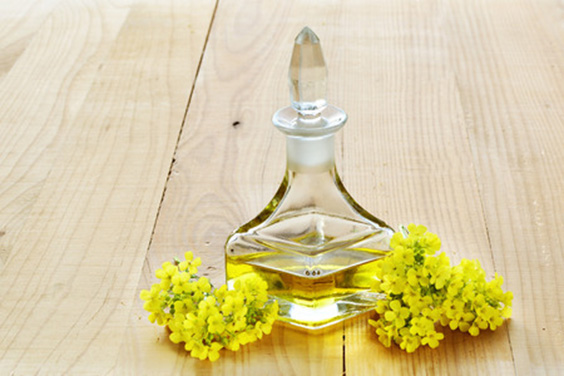
When manufacturers press rape seed to create rape oil, they also end up with an unwanted byproduct – rape meal. This gritty waste product is often overlooked as the rape oil is what most farmers are growing their crop for. But as well as being used to feed livestock, the rape meal is also biodegradable and can boost your compost heap. It is actually used by farmers growing mushrooms specifically as it helps stop diseases.
96. QUAIL EGGS OR OTHER SMALL BIRD EGGS

If you’ve ever kept quail, you may know that while they are a brilliant and funny little pet their ability to look after the eggs they lay is not quite that good. Quail often lay eggs straight onto the ground rather than in nest boxes or when they do get them into a nest you might find they’ve been squashed by other birds or even the layer itself! If you’ve got a few quail you might want to eat their eggs but if you don’t they can be thrown straight onto the compost whole. The eggshell is just as compostable as a chicken’s.
97. DOLOMITE LIME
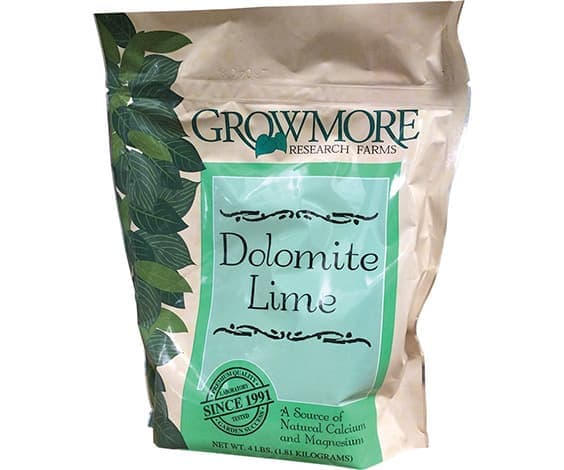
This garden supplement is high in alkali which means it is excellent to add as a remedy if you think your compost heap is getting too acidic. The lime reduces acidity by increasing the pH level which will help your plants as they need a lower acidity to be able to gather all the nutrients they need from the soil. If you’ve added some acidic ingredients to your compost then it might be an idea to sprinkle in small quantities of lime until the soil returns to a more neutral pH level.
98. SHREDDED CARDBOARD

Cardboard is an excellent, reusable and recyclable material. We use it in everything from parcel boxes to food containers. The paper is a natural product and the uncoated cardboard will break down easily in a heap. To make it degrade faster, just shred it into small chunks so it has less surface area.
99. RHUBARB STEMS

Rhubarb is a great winter favourite. Make it into a pie or just stew it with some sugar and serve with ice cream for a tasty dessert. But while the fruit itself is good to eat, the green stems are not edible and can often just end up in the dustbin. This green vegetation is actually perfectly fine to throw onto the compost heap and will break down over time. It is classed as a “green” compostable material so bear that in mind when making your mix.
100. GARDENING GLOVES (MADE OF LEATHER OR RECYCLABLE MATERIAL)
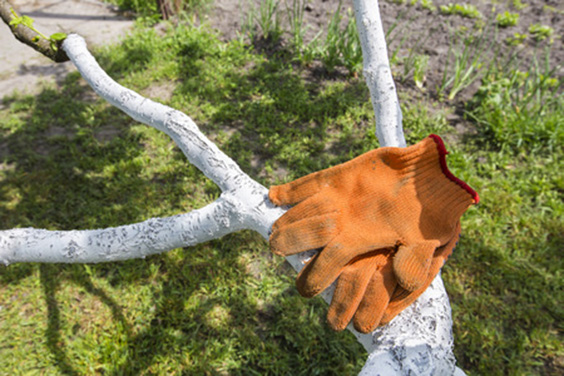
Gardening gloves are the workhorse of any gardeners toolbox. The leather in gardening gloves is totally safe and biodegradable. So when you’re done with the gloves, just add them to the garden and get yourself a new pair!
101. TOBACCO

Giving up smoking? Or just want to get rid of some old and stale tobacco? As a natural plant, tobacco is perfectly safe to add to your compost heap. Even though it will dry out over time, if you sprinkle some water or other moisture onto the heap when you add it and mix it in thoroughly it will blend easily into your mix.
102. DRIED JELLYFISH

This is another thing the kids might find after a day at the beach but a dried up jellyfish could be added to your compost pile. These animals are invertebrates which means it has no bones or spine which would make it harder to decompose. This means the soft, fleshy jellyfish will disappear in no time. It might be an idea to only add one at a time and then mix it in well as they will smell as they rot.
103. WHEAT BRAN
We all love a healthy breakfast of wheat bran but if you bought a bag with all good intentions and then found it going stale at the back of the cupboard, you can save it from the waste bin by throwing it back into your compost heap. Wheat bran is actually used in Bokashi which is a type of fermented bran used to help your compost heap rot faster and stop smells from food scraps. Learn how to make it here.
104. GUINEA PIG DROPPINGS

If you’ve got a couple of pet guinea pigs then save up their droppings and add them straight to your compost heap. Guinea pigs poop is actually just as good a fertilizer as rabbit droppings. Their diet is practically the same as a rabbit (grass, hay and fresh veg) so it stands to reason that their waste will be the same!
105. CATTAIL REEDS

A cattail is an edible wild plant that grows in north America. You will recognise its long, brown top straight away as it is abundant around ponds and rivers. The roots of this plant can actually be ground down into a protein-rich flour and the fluffy wool in the “cigar heads” at the top can be used for insulation, pillow filling and even nappies. The stalks can be eaten in a stir fry and like most food scraps and vegetables it is totally safe to add to your compost heap.
106. CLOVER

This common plant will take a little while to break down but it gives your compost heap a real boost. Clover takes up to six months to fully break down into soil but when it does it will create an excellent, fine texture. The best way to use it is by chopping it up into small pieces so it degrades faster.
107. LEFTOVER FISH BAIT

Maggots and fish bait pellets are really not something you want hanging around your home. Live maggots should never ever be added to your compost heap as within days you would have a full on fly outbreak as you’re just giving the maggots a nice, food filled home to breed and multiply. But prepared fish bait pellets, which are dry and then added to hooks, are perfectly ok to compost. They often contain dried fish and fish meal so it is something (as discussed above) that would be a good addition to your heap.
108. GRANITE DUST
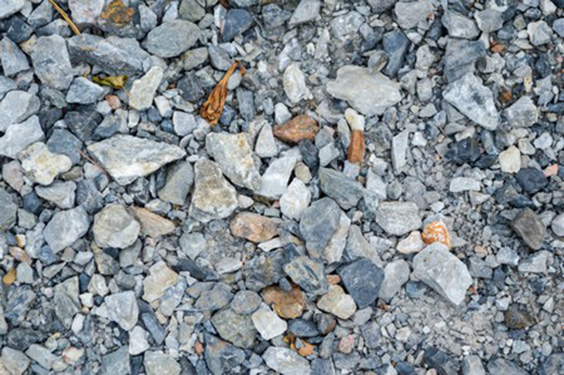
Just like other powdered rock, granite dust from quarries or just leftover from some home improvements can be added to your compost heap. If you’ve had some granite worktops laid, the builder may have used your backyard to cut up the slabs. But instead of just sweeping up the debris and throwing it in the trash, add that ground up granite into your compost heap to give it better texture and create air pockets which will speed up the composting process.
109. CHEESE
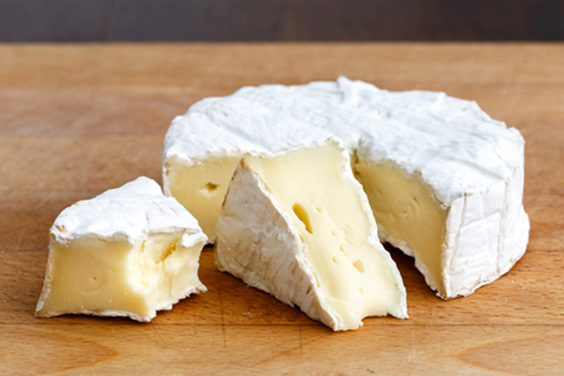
Just like milk and other dairy products, cheese is best added to compost bins in small amounts. Let’s face it, cheese is basically mould anyway so it is halfway there already! Make sure you add small amounts, mix it in well and ideally have a cover or a lid over your bin so mice or other pests aren’t attracted to the compost.
110. GREENSAND

This is a natural and completely harm-free way of enhancing your soil. The naturally-occurring mineral is mined from ancient sea floor deposits and is widely used as a garden fertiliser. It doesn’t harm insects, pets or people and can be handled with bare hands so it is perfect for the more organic garden. It won’t damage plants like a chemical fertilizer and is one of the best additions to compost to give it a natural boost.
111. BURNED OATMEAL
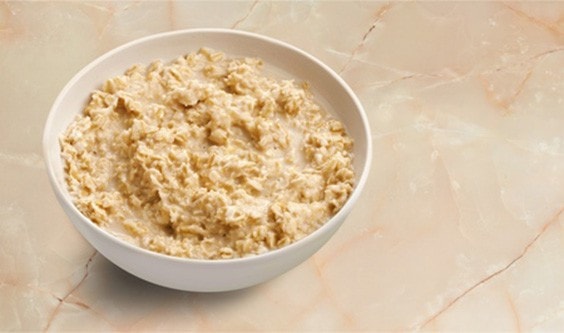
We’ve all accidentally left the oatmeal on the stove for too long and ended up burning it to the bottom of the pan. While you can salvage the top layer and add copious amounts of sugar to it to disguise the burned flavour, you’re left with the gunky residue on the bottom of the pan. While this might seem impossible to get rid of, you can actually add it straight to the compost. The dairy content means you shouldn’t add too much though, as you might start to get that sour milk smell.
112. LINT FROM THE CLOTHES DRYER

As covered above, fabric scraps are biodegradable – although not too quick. Fabric lint from your clothes dryer is actually dangerous if left as it will clog the vents and could make your appliance into a fire hazard. The little balls of fluff can be scooped out and added straight to the compost. While it will take a while to break down, the lighter texture will help it degrade faster.
113. CRUSTS FROM BREAD

Some people just never eat their sandwich crusts. The battle you can have with your children in trying to convince them to finish of their sandwich can seem never ending. So rather than turn lunchtime into a battle of wills, just keep the crusts and thrown them into the compost.
114. URINE
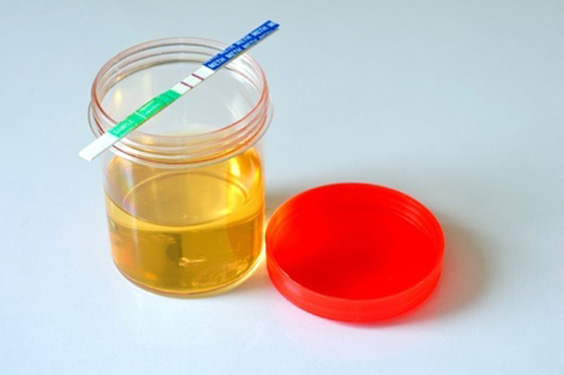
This is a little bit gross but gardeners swear by adding a little urine into compost heaps. The science behind this is that the ammonia contained in urine acts as a natural fertilizer and will actually speed up the compost process. And good news lads, male’s urine is actually better than females as it is slightly less acidic.
115. GROCERY RECEIPTS

If you’ve gone out shopping for the day, especially around Christmas, you might find your purse full of paper receipts. Even just the few trips to get groceries seems to be accompanied by reams of paper. The best kind to compost are made of recycled paper as some receipts are now covered in BPA which is a known carcinogen.
116. CANNED FRUIT AND VEGETABLES (OUT OF THE CAN!)

While canned fruit and veg has an incredibly long shelf life, we all know someone who has the odd can of food around that looks like it has seen better days. While you might be tempted to see if those canned peas have stood the test of time, it is probably best to empty them straight onto the compost heap. Treat them the same as any other food scraps and be mindful of pests but the water or brine around them is completely safe to add too and will give your heap a little moisture.
117. IVORY SOAP SCRAPS

Soap scraps can be reformed and used again to save you losing the last slivers of that soap. Chucking it in landfill is really harmful as it takes a while to break down. But adding small pieces into your compost heap is fine and will give your heap a bit of texture as the crumbs create air pockets.
118. DIRT FROM SHOES OR BOOTS

Fed up with muddy boots stomping all over your house? Add a little seat outside the back door and some sort of tub or bucket to catch the clumps. Train your family members (and visitors!) to stop outside the door and bang their shoes or boots off into the bucket. This fresh soil can just be transported straight back down into the compost heap and recycled into your garden.
119. HORSE HAIR

Horse hair is a coarse and difficult thing to brush but it does biodegrade like any other hair clippings. Like most mammals, horses moult through the seasons so will need a strong brush and maybe even a clip when the weather changes. This “shedding out” can leave you with huge clumps of hair to get rid of and instead of just letting it blow away into the wind you can scoop it up and dump it onto your heap to give your compost a boost of nitrogen.
120. COOKED RICE

While this is traditionally thrown at weddings (uncooked of course!) rice is actually quite harmful for birds as it swells in their stomachs. Cooked rice does compost and can be added to bins but it should be put into one which has a lid or a cover to stop animals snacking on your leftovers.
121. REPTILE CAGE LINING/BEDDING

Most reptiles live in a shredded sawdust or wood-based bedding. This is already perfect for composting as wood breaks down easily – especially in small pieces. The wood can be acidic so that is worth bearing in mind but if you have snake or other reptile droppings in the bedding you don’t have to worry about taking it out, that can be thrown on top too.
122. TOFU

Tofu is a staple of the vegan diet. The squidgy, grey substance is often used in stir fries and other meals as a replacement for meat. But the bean curd is actually really easy to compost as it is made completely from natural materials – soybeans. It is high in iron and calcium so it can give your soil some added extras.
123. WINE

If you’re going to stop drinking for a while, or you’ve left that bottle of red to “breathe” for just a little too long and it now resembles vinegar, you might just want to pour the wine down the sink. Wine, in small amounts, can be added to compost. Bear in mind it could end up smelling pretty bad and may also attract pests so stick to a small amount.
124. BANANA PEEL

Bananas are a brilliant snack but the peel is a pain to get rid of. The skin will break down over time, drying out first then turning black and eventually powdery as it decomposes further. Before you compost that overripe banana though, remember you can use the skin as polish on your boots.
125. CHOCOLATE COOKIES
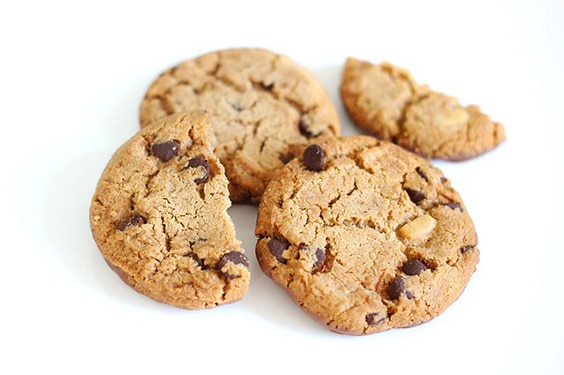
I have no idea why you would ever have cookies to throw away in the first place (there’s never any left over at my house!) but if by some magic, you end up with a few cookies that have gone bad you can just toss them onto the compost heap. The cookies will be a temptation for mice or other animals though so it is best to cover over your heap or mix them in thoroughly to disguise the smell.
126. WOODEN TOOTHPICKS
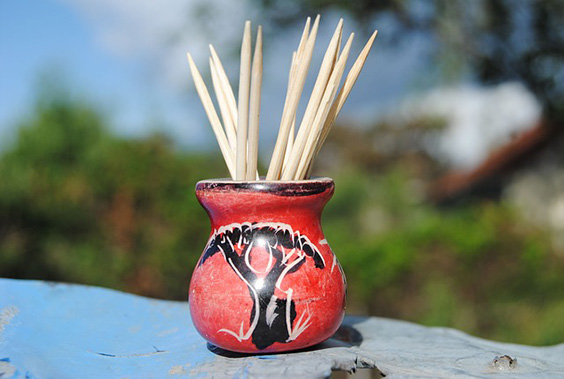
Wood breaks down quite quickly in a compost mix and the smaller the pieces, the quicker it will degrade. That’s what makes toothpicks easy to compost so once you’ve finished with them just add them to the pile.
127. MOSS

Moss is a pain when it clogs up your gutters and blocks drains but this spongy plant is actually pretty handy when it comes to composting. Dead moss raked up from your lawn can be thrown straight on the heap. It takes a while to break down but you can speed this up by adding around one part moss to four parts of any other ingredients.
128. STALE CEREAL

Toasted rice, cornflakes or any other cereal is absolutely fine to compost. Add a little moisture to the heap and it will speed up the whole process. Be careful not to add too much sugary cereal as the sweet smell with attract flies and bugs. Plain, uncoated cereal is the best thing to throw on the heap.
129. PICKLES

Pickles are a great accompaniment to any sandwich but when it comes to getting rid of them you might think the preserving they go through makes it harder to compost them. While this is partially true, in that they will take longer than an untreated vegetable, they will eventually break down and the preserve will have no harmful effects on your heap.
130. PEANUT BUTTER SANDWICHES

The staple school lunchtime snack, a peanut butter sandwich is one of the most eaten sandwiches in America. But on the odd occasion one doesn’t get finished up at lunchtime and makes it back home, you can throw it onto the compost heap. Bread breaks down easily and quickly but the peanut butter might take a little longer due to the high fat content.
131. DEAD BEES AND FLIES

If you’ve got a dead bee or fly nest in your house or garden, you might find yourself with the task of getting rid of these tiny little bodies. You can throw them straight onto a compost heap but with a note of caution. Make sure the flies are completely dead before you do and are not just in stasis as if you add flies onto your compost heap that are still alive they could breed and cause you problems later down the line.
132. SNOW

This isn’t really something you would necessarily “add” to a compost heap but it should bring you some comfort if you live in a cold climate. Snow won’t harm your compost pile as if temperatures drop low enough for it to snow then there is a good chance your compost will be frozen solid anyway and won’t absorb any of the excess moisture.
133. GREETINGS CARD ENVELOPES
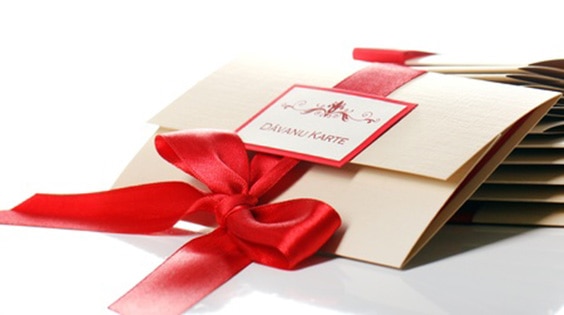
Another thing that comes with the cold weather is holiday greetings cards. The cards themselves are a cheery addition to your home but the envelopes are too often just thrown in the trash and left to go to landfill. Envelopes made of recycled paper are easily compostable and even dyed paper envelopes can be broken down. You should avoid putting any coated paper or metallic into your compost heap however as they won’t break down as easily and could contaminate the soil.
134. WEDDING BOUQUETS AND BUTTONHOLES

Much like cut flower displays, buttonholes are beautiful for the day of a wedding but they don’t tend to last long afterwards. If you don’t want to freeze them or preserve them in any other way to remind you of the day, then you can compost them quite easily. Just make sure any florist’s wire or pins that are used in the display are take out first.
135. OLD BEER

Just like wine, it seems difficult to imagine you would have beer that is around long enough to get “old” but if you’ve got a couple of half full cans laying around after a BBQ or party, the temptation is just to throw them into the sink. But this would be a mistake. The yeast and nitrogen in stale beer acts as a kick-starter for your compost and will make it rot faster.
136. LIQUID FROM CANS OF FRUIT OR VEGETABLES

If you use canned fruit or vegetables in your cookery, you may drain off the liquid first. This could just be sugar or salt water but the fact it has been sitting in the can with your produce means a lot of the goodness in the crops have actually leeched out into this water. If you don’t fancy drinking it, you can just pour it onto your compost heap to add a few nutrients while also giving it some moisture.
137. PENCIL SHAVINGS

Artists, or anyone with small children, may find themselves with lots of pencil shavings. These little pieces of wood should be treated just like sawdust and, as such, are totally safe to compost.
138. WOOLLEN SOCKS
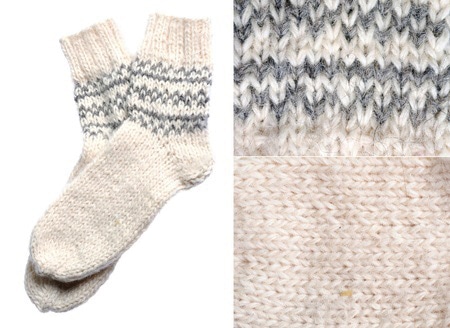
It is easy to forget wool is a natural product as we are so used to seeing it everywhere. But if your socks have seen better days and are beyond darning, you can throw them into the compost – as long as they are pure wool. Sheep’s wool compost is a product in its own right so it is well known for it’s benefits. It retains moisture and improves soil texture which makes it a brilliant addition to your heap.
139. ARTICHOKE LEAVES

Artichoke hearts are a delicacy but the leaves are often discarded. They do take longer to break down than the softer hearts but they are a great “green” addition to the compost heap. If you use vermicomposting, then these are attractive to the worms too.
140. LEATHER WATCH BANDS OR BRACELETS

f you’ve got some old watches with broken straps, you might just throw them away. But leather (as pointed out above) is completely compostable and can be added to your heap. If you have leather bracelets that are braided or thick, it may be worth breaking them up or slicing them into smaller pieces to help them compost faster.
141. FRUIT SALAD

Fruit salad is a tasty, healthy dessert but once you’ve mixed it up it really doesn’t last long. You can add this fruit into your compost pile with a few caveats. Just make sure your compost bin has a lid on it or a strong cover so you keep pests or flies away from the rotting food.
142. SALAD LEAVES

Salad is also another food which doesn’t last long once prepared is salad leaves. This is really tasty as part of a meal but when they start to wilt and turn brown it is time to get the salad back to the garden. You can even use the soil to grow your next lot of salad leaves so there is absolutely no wastage.
143. BROWN PAPER BAGS

Brown paper bags are often made of recycled paper and are thin and uncoated. This makes them the perfect addition to the compost heap as they will break down quickly and easily. Some places even sell biodegradable paper bags for lining inside caddies holding food scraps which makes it easier to just chuck the whole thing into your compost bin.
144. TICKETS (THEATRE, GIGS, CINEMA)

Some people like to save their tickets and remind themselves of a good night out or a first date at a movie theatre but if you want to declutter and get rid of all those old tickets then you can just throw them onto the compost heap. The best paper is uncoated and single colour but thicker card will also break down if you tear it into small pieces.
145. FEATHERS

Feathers are one of the best things to add protein to your compost. The best way to use them in your compost is mixing them in a handful at a time so they aren’t attractive to other small animals like rats who might want to carry them off and make them into a nest for themselves.
146. ANIMAL FUR

In years gone by, animal fur was kept and turned into clothes but it is now distasteful to wear animal skins. If you cook and eat rabbits or other small creatures, you might find yourself with leftover fur. Make sure you clean it thoroughly to remove any flesh or meat and then throw it onto the compost heap. It will decompose slowly but add some nitrogen to the finished soil.
147. COCONUT HULL FIBRE

Coconut and coconut oil is the new favourite food of the celebrities. While it seems in fashion at the moment, the fibrous hulls of the coconut are difficult to get rid of. Known as coir, the fibre can be compacted into bricks then rehydrated to create a contaminant free compost which retains moisture easily.
THINGS YOU SHOULD NEVER COMPOST:
1. COOKING OIL
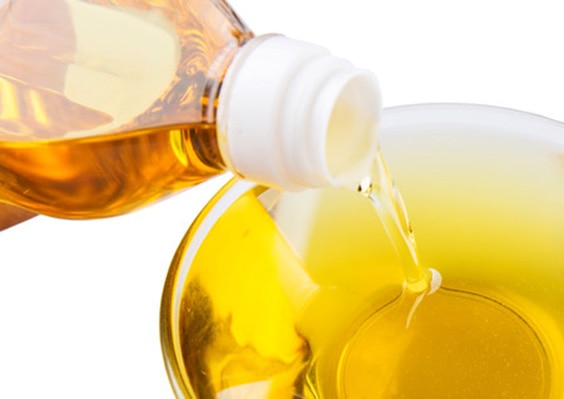
2. DISEASED PLANTS
3. METALLIC WRAPPING PAPER

4. SAWDUST (UNLESS FROM UNTREATED WOOD)

5. WALNUTS

6. JUICE BOXES OR CARTONS WITH A COATING OF METAL

7. GLASS
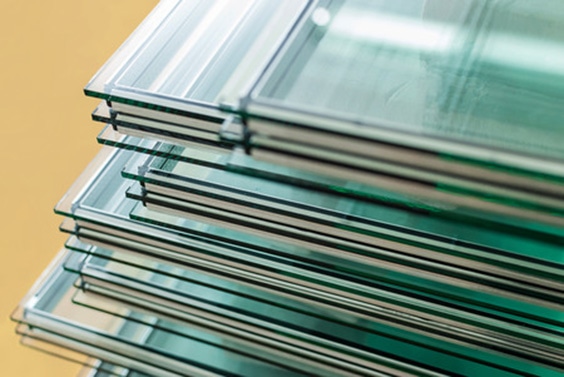
8. GREASY FOOD CONTAINERS (PIZZA BOXES)

9. PLASTIC
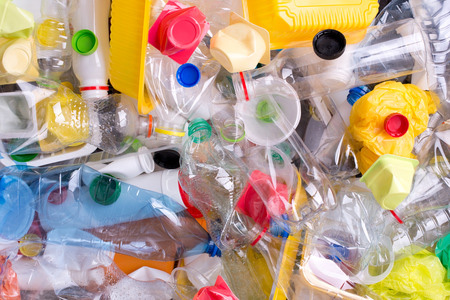
TO CONCLUDE
So, there we have a huge list of things you can compost and a few you can’t. Next time you go to throw away your moldy things, just check and see if it appears on this list and you could save it from the bin and add to your compost heap.
A well looked after compost heap will give you really good soil rich in nutrients which will help your garden blossom and grow. Avoid putting any of the banned items into your compost heap and you’ll make sure the compost stays the best it can be.
Hopefully you’ve enjoyed this list and you’ve gained some more knowledge about things you can use on your compost heap. We tried to think of everything so you don’t have to, but if you have any compostable items or tips you’d like to share with other readers then please comment below. If you know any other gardeners hoping to start composting, then share this list with them and help them become the best composter there is!

